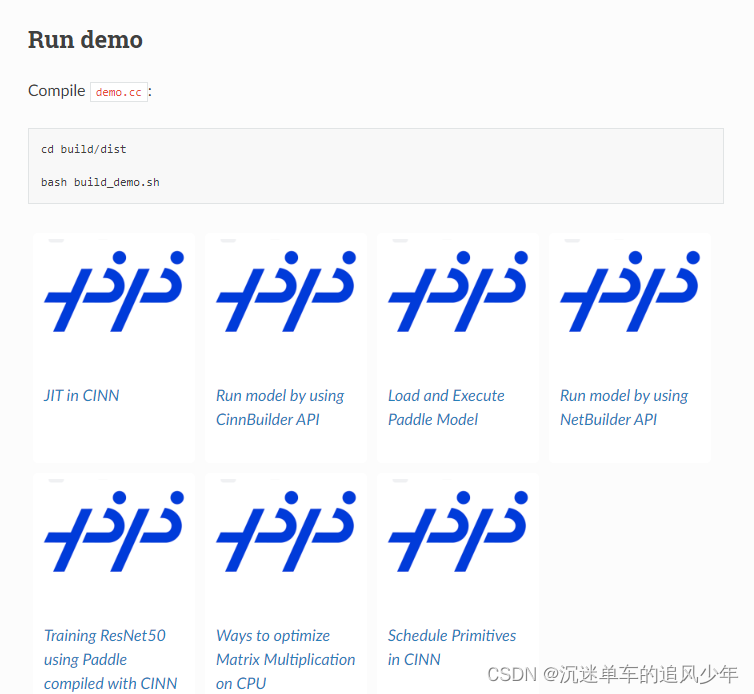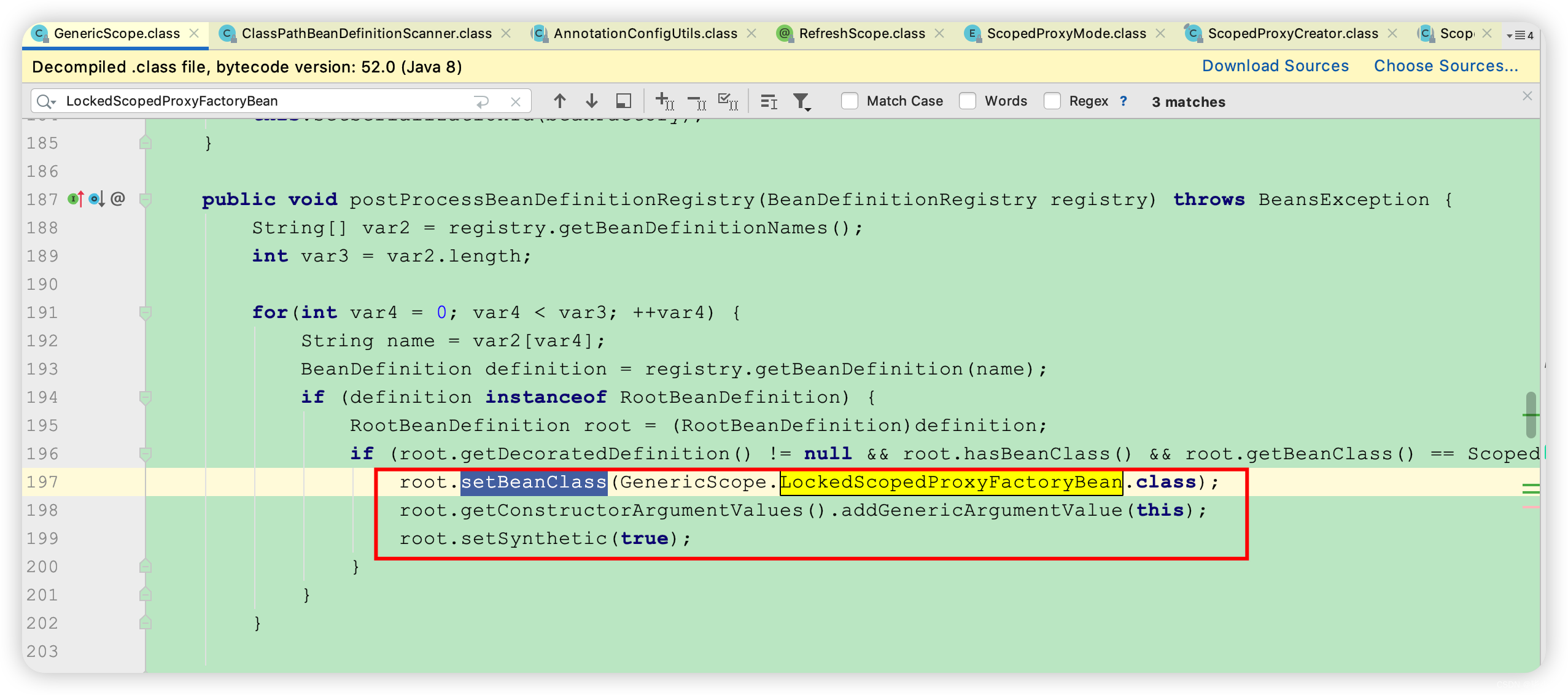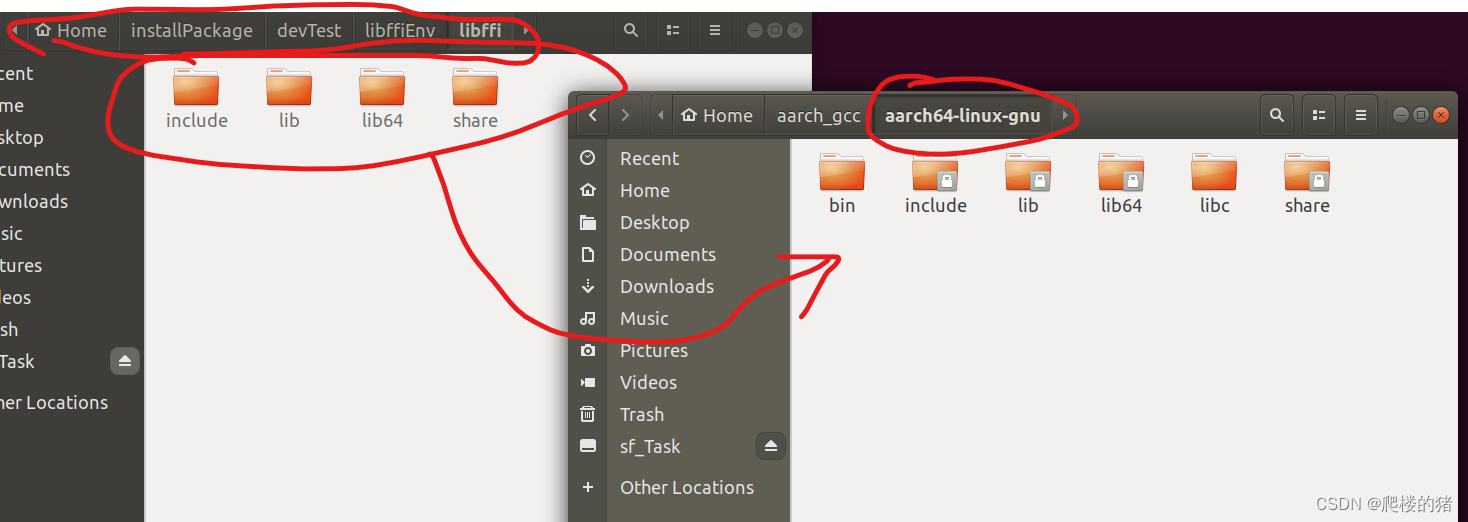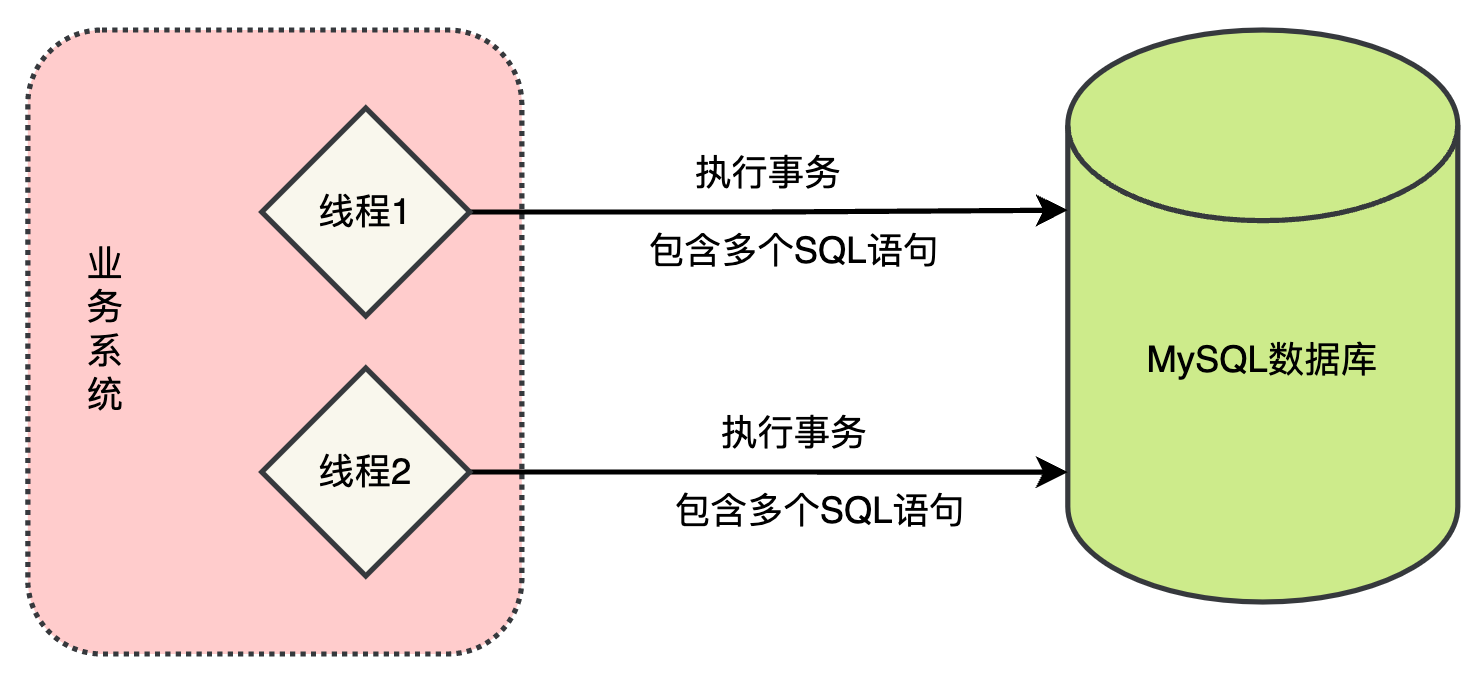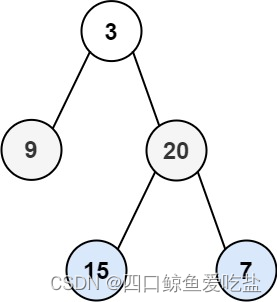在上一篇文章中我们描述了SpringSecurity的执行过程。我们我们了解到了以下内容
在SpringSecurity框架中有三个非常核心的类和接口,分别是
1.SecurityFilterChain接口
2.FilterChainProxy类
3.DelegatingFilterProxy类
springboot项目中,客户端向Tomcat 服务器发起请求。因为Tomcat的源码不再本次文章的讨论范围之内。以下部分内容复制了其他老师的流程图
四大容器的作用:
Engine:可以处理Tomcat所接收到所有请求,不管这些请求是请求哪个应用或哪个Servlet的。
Host:可以处理某个特定域名的所有请求
Context:可以处理某个应用的所有请求
Wrapper:可以处理某个Servlet的所有请求

在上面的流程图中我们从Wrapper包装器开发分析。
该Wrapper类实际上是StandardWrapperValve类。在请求的执行过程中调用了StandardWrapperValve类中的invoke方法。
在该方法内部
public final void invoke(Request request, Response response)
throws IOException, ServletException {
// Initialize local variables we may need
boolean unavailable = false;
Throwable throwable = null;
// This should be a Request attribute...
long t1=System.currentTimeMillis();
requestCount.incrementAndGet();
StandardWrapper wrapper = (StandardWrapper) getContainer();
Servlet servlet = null;
Context context = (Context) wrapper.getParent();
// Check for the application being marked unavailable
if (!context.getState().isAvailable()) {
response.sendError(HttpServletResponse.SC_SERVICE_UNAVAILABLE,
sm.getString("standardContext.isUnavailable"));
unavailable = true;
}
// Check for the servlet being marked unavailable
if (!unavailable && wrapper.isUnavailable()) {
container.getLogger().info(sm.getString("standardWrapper.isUnavailable",
wrapper.getName()));
long available = wrapper.getAvailable();
if ((available > 0L) && (available < Long.MAX_VALUE)) {
response.setDateHeader("Retry-After", available);
response.sendError(HttpServletResponse.SC_SERVICE_UNAVAILABLE,
sm.getString("standardWrapper.isUnavailable",
wrapper.getName()));
} else if (available == Long.MAX_VALUE) {
response.sendError(HttpServletResponse.SC_NOT_FOUND,
sm.getString("standardWrapper.notFound",
wrapper.getName()));
}
unavailable = true;
}
// Allocate a servlet instance to process this request
try {
if (!unavailable) {
//获取servlet,实际上获取到的是DispatcherServlet
servlet = wrapper.allocate();
}
} catch (UnavailableException e) {
container.getLogger().error(
sm.getString("standardWrapper.allocateException",
wrapper.getName()), e);
long available = wrapper.getAvailable();
if ((available > 0L) && (available < Long.MAX_VALUE)) {
response.setDateHeader("Retry-After", available);
response.sendError(HttpServletResponse.SC_SERVICE_UNAVAILABLE,
sm.getString("standardWrapper.isUnavailable",
wrapper.getName()));
} else if (available == Long.MAX_VALUE) {
response.sendError(HttpServletResponse.SC_NOT_FOUND,
sm.getString("standardWrapper.notFound",
wrapper.getName()));
}
} catch (ServletException e) {
container.getLogger().error(sm.getString("standardWrapper.allocateException",
wrapper.getName()), StandardWrapper.getRootCause(e));
throwable = e;
exception(request, response, e);
} catch (Throwable e) {
ExceptionUtils.handleThrowable(e);
container.getLogger().error(sm.getString("standardWrapper.allocateException",
wrapper.getName()), e);
throwable = e;
exception(request, response, e);
servlet = null;
}
MessageBytes requestPathMB = request.getRequestPathMB();
DispatcherType dispatcherType = DispatcherType.REQUEST;
if (request.getDispatcherType()==DispatcherType.ASYNC) dispatcherType = DispatcherType.ASYNC;
request.setAttribute(Globals.DISPATCHER_TYPE_ATTR,dispatcherType);
request.setAttribute(Globals.DISPATCHER_REQUEST_PATH_ATTR,
requestPathMB);
// Create the filter chain for this request
//创建请求的过滤器链
ApplicationFilterChain filterChain =
ApplicationFilterFactory.createFilterChain(request, wrapper, servlet);
// Call the filter chain for this request
// NOTE: This also calls the servlet's service() method
try {
if ((servlet != null) && (filterChain != null)) {
// Swallow output if needed
if (context.getSwallowOutput()) {
try {
SystemLogHandler.startCapture();
if (request.isAsyncDispatching()) {
request.getAsyncContextInternal().doInternalDispatch();
} else {
filterChain.doFilter(request.getRequest(),
response.getResponse());
}
} finally {
String log = SystemLogHandler.stopCapture();
if (log != null && log.length() > 0) {
context.getLogger().info(log);
}
}
} else {
if (request.isAsyncDispatching()) {
request.getAsyncContextInternal().doInternalDispatch();
} else {
filterChain.doFilter
(request.getRequest(), response.getResponse());
}
}
}
} catch (ClientAbortException e) {
throwable = e;
exception(request, response, e);
} catch (IOException e) {
container.getLogger().error(sm.getString(
"standardWrapper.serviceException", wrapper.getName(),
context.getName()), e);
throwable = e;
exception(request, response, e);
} catch (UnavailableException e) {
container.getLogger().error(sm.getString(
"standardWrapper.serviceException", wrapper.getName(),
context.getName()), e);
// throwable = e;
// exception(request, response, e);
wrapper.unavailable(e);
long available = wrapper.getAvailable();
if ((available > 0L) && (available < Long.MAX_VALUE)) {
response.setDateHeader("Retry-After", available);
response.sendError(HttpServletResponse.SC_SERVICE_UNAVAILABLE,
sm.getString("standardWrapper.isUnavailable",
wrapper.getName()));
} else if (available == Long.MAX_VALUE) {
response.sendError(HttpServletResponse.SC_NOT_FOUND,
sm.getString("standardWrapper.notFound",
wrapper.getName()));
}
// Do not save exception in 'throwable', because we
// do not want to do exception(request, response, e) processing
} catch (ServletException e) {
Throwable rootCause = StandardWrapper.getRootCause(e);
if (!(rootCause instanceof ClientAbortException)) {
container.getLogger().error(sm.getString(
"standardWrapper.serviceExceptionRoot",
wrapper.getName(), context.getName(), e.getMessage()),
rootCause);
}
throwable = e;
exception(request, response, e);
} catch (Throwable e) {
ExceptionUtils.handleThrowable(e);
container.getLogger().error(sm.getString(
"standardWrapper.serviceException", wrapper.getName(),
context.getName()), e);
throwable = e;
exception(request, response, e);
}
// Release the filter chain (if any) for this request
if (filterChain != null) {
filterChain.release();
}
// Deallocate the allocated servlet instance
try {
if (servlet != null) {
wrapper.deallocate(servlet);
}
} catch (Throwable e) {
ExceptionUtils.handleThrowable(e);
container.getLogger().error(sm.getString("standardWrapper.deallocateException",
wrapper.getName()), e);
if (throwable == null) {
throwable = e;
exception(request, response, e);
}
}
创建拦截器链
public static ApplicationFilterChain createFilterChain(ServletRequest request,
Wrapper wrapper, Servlet servlet) {
// If there is no servlet to execute, return null
if (servlet == null)
return null;
// Create and initialize a filter chain object
ApplicationFilterChain filterChain = null;
if (request instanceof Request) {
Request req = (Request) request;
if (Globals.IS_SECURITY_ENABLED) {
// Security: Do not recycle
filterChain = new ApplicationFilterChain();
} else {
filterChain = (ApplicationFilterChain) req.getFilterChain();
if (filterChain == null) {
filterChain = new ApplicationFilterChain();
req.setFilterChain(filterChain);
}
}
} else {
// Request dispatcher in use
filterChain = new ApplicationFilterChain();
}
filterChain.setServlet(servlet);
filterChain.setServletSupportsAsync(wrapper.isAsyncSupported());
// Acquire the filter mappings for this Context
StandardContext context = (StandardContext) wrapper.getParent();
//重点关注此处,获取在上一篇文章中的filterMaps属性
FilterMap filterMaps[] = context.findFilterMaps();
// If there are no filter mappings, we are done
if ((filterMaps == null) || (filterMaps.length == 0))
return (filterChain);
// Acquire the information we will need to match filter mappings
DispatcherType dispatcher =
(DispatcherType) request.getAttribute(Globals.DISPATCHER_TYPE_ATTR);
String requestPath = null;
Object attribute = request.getAttribute(Globals.DISPATCHER_REQUEST_PATH_ATTR);
if (attribute != null){
requestPath = attribute.toString();
}
String servletName = wrapper.getName();
// Add the relevant path-mapped filters to this filter chain
for (int i = 0; i < filterMaps.length; i++) {
if (!matchDispatcher(filterMaps[i] ,dispatcher)) {
continue;
}
if (!matchFiltersURL(filterMaps[i], requestPath))
continue;
//获取拦截器配置,重点关注此处
ApplicationFilterConfig filterConfig = (ApplicationFilterConfig)
context.findFilterConfig(filterMaps[i].getFilterName());
if (filterConfig == null) {
// FIXME - log configuration problem
continue;
}
filterChain.addFilter(filterConfig);
}
// Add filters that match on servlet name second
for (int i = 0; i < filterMaps.length; i++) {
if (!matchDispatcher(filterMaps[i] ,dispatcher)) {
continue;
}
if (!matchFiltersServlet(filterMaps[i], servletName))
continue;
ApplicationFilterConfig filterConfig = (ApplicationFilterConfig)
context.findFilterConfig(filterMaps[i].getFilterName());
if (filterConfig == null) {
// FIXME - log configuration problem
continue;
}
filterChain.addFilter(filterConfig);
}
// Return the completed filter chain
return filterChain;
}
在上面的代码中分析ApplicationFilterConfig filterConfig = (ApplicationFilterConfig)
context.findFilterConfig(filterMaps[i].getFilterName());
在该代码中获取filterConfigs属性中的值,该属性中的值实在StandardContext中startInternal方法中调用的filterStart方法赋值进去的,该该方法中循环filterDefs属性(上一篇有交代其赋值过程),
生成ApplicationFilterConfig对象并对filterConfigs赋值,赋值的内容是name = "springSecurityFilterChain",value为ApplicationFilterConfig且其filter属性是DelegatingFilterProxyRegistrationBean类型的对象。
public boolean filterStart() {
if (getLogger().isDebugEnabled()) {
getLogger().debug("Starting filters");
}
// Instantiate and record a FilterConfig for each defined filter
boolean ok = true;
synchronized (filterConfigs) {
filterConfigs.clear();
for (Entry<String,FilterDef> entry : filterDefs.entrySet()) {
String name = entry.getKey();
if (getLogger().isDebugEnabled()) {
getLogger().debug(" Starting filter '" + name + "'");
}
try {
ApplicationFilterConfig filterConfig =
new ApplicationFilterConfig(this, entry.getValue());
//重点关注此处
filterConfigs.put(name, filterConfig);
} catch (Throwable t) {
t = ExceptionUtils.unwrapInvocationTargetException(t);
ExceptionUtils.handleThrowable(t);
getLogger().error(sm.getString(
"standardContext.filterStart", name), t);
ok = false;
}
}
}
return ok;
}
ApplicationFilterConfig(Context context, FilterDef filterDef)
throws ClassCastException, ClassNotFoundException, IllegalAccessException,
InstantiationException, ServletException, InvocationTargetException, NamingException,
IllegalArgumentException, NoSuchMethodException, SecurityException {
super();
this.context = context;
this.filterDef = filterDef;
// Allocate a new filter instance if necessary
if (filterDef.getFilter() == null) {
getFilter();
} else {
this.filter = filterDef.getFilter();
getInstanceManager().newInstance(filter);
initFilter();
}
}通过以下方法filterChain.doFilter (request.getRequest(), response.getResponse());调用拦截器。
@Override
public void doFilter(ServletRequest request, ServletResponse response)
throws IOException, ServletException {
if( Globals.IS_SECURITY_ENABLED ) {
final ServletRequest req = request;
final ServletResponse res = response;
try {
java.security.AccessController.doPrivileged(
new java.security.PrivilegedExceptionAction<Void>() {
@Override
public Void run()
throws ServletException, IOException {
internalDoFilter(req,res);
return null;
}
}
);
} catch( PrivilegedActionException pe) {
Exception e = pe.getException();
if (e instanceof ServletException)
throw (ServletException) e;
else if (e instanceof IOException)
throw (IOException) e;
else if (e instanceof RuntimeException)
throw (RuntimeException) e;
else
throw new ServletException(e.getMessage(), e);
}
} else {
internalDoFilter(request,response);
}
}分析其调用的internalDoFilter方法。在该方法中可以看到
1.Filter filter = filterConfig.getFilter(); 获取拦截器
2.filter.doFilter(request, response, this);调用拦截器
3.servlet.service(request, response);执行DispatcherServlet的service方法,真正的请求调用。
在方法1中filterConfig.getFilter()获取到的过滤器,
private void internalDoFilter(ServletRequest request,
ServletResponse response)
throws IOException, ServletException {
// Call the next filter if there is one
if (pos < n) {
ApplicationFilterConfig filterConfig = filters[pos++];
try {
Filter filter = filterConfig.getFilter();
if (request.isAsyncSupported() && "false".equalsIgnoreCase(
filterConfig.getFilterDef().getAsyncSupported())) {
request.setAttribute(Globals.ASYNC_SUPPORTED_ATTR, Boolean.FALSE);
}
if( Globals.IS_SECURITY_ENABLED ) {
final ServletRequest req = request;
final ServletResponse res = response;
Principal principal =
((HttpServletRequest) req).getUserPrincipal();
Object[] args = new Object[]{req, res, this};
SecurityUtil.doAsPrivilege ("doFilter", filter, classType, args, principal);
} else {
filter.doFilter(request, response, this);
}
} catch (IOException | ServletException | RuntimeException e) {
throw e;
} catch (Throwable e) {
e = ExceptionUtils.unwrapInvocationTargetException(e);
ExceptionUtils.handleThrowable(e);
throw new ServletException(sm.getString("filterChain.filter"), e);
}
return;
}
// We fell off the end of the chain -- call the servlet instance
try {
if (ApplicationDispatcher.WRAP_SAME_OBJECT) {
lastServicedRequest.set(request);
lastServicedResponse.set(response);
}
if (request.isAsyncSupported() && !servletSupportsAsync) {
request.setAttribute(Globals.ASYNC_SUPPORTED_ATTR,
Boolean.FALSE);
}
// Use potentially wrapped request from this point
if ((request instanceof HttpServletRequest) &&
(response instanceof HttpServletResponse) &&
Globals.IS_SECURITY_ENABLED ) {
final ServletRequest req = request;
final ServletResponse res = response;
Principal principal =
((HttpServletRequest) req).getUserPrincipal();
Object[] args = new Object[]{req, res};
SecurityUtil.doAsPrivilege("service",
servlet,
classTypeUsedInService,
args,
principal);
} else {
servlet.service(request, response);
}
} catch (IOException | ServletException | RuntimeException e) {
throw e;
} catch (Throwable e) {
e = ExceptionUtils.unwrapInvocationTargetException(e);
ExceptionUtils.handleThrowable(e);
throw new ServletException(sm.getString("filterChain.servlet"), e);
} finally {
if (ApplicationDispatcher.WRAP_SAME_OBJECT) {
lastServicedRequest.set(null);
lastServicedResponse.set(null);
}
}
}在该方法中通过filterDef.getFilterClass()获取到上一篇中设置的filterClass即springSecurityFilterChain,又通过newInstance的到
Filter getFilter() throws ClassCastException, ClassNotFoundException, IllegalAccessException,
InstantiationException, ServletException, InvocationTargetException, NamingException,
IllegalArgumentException, NoSuchMethodException, SecurityException {
// Return the existing filter instance, if any
if (this.filter != null)
return (this.filter);
// Identify the class loader we will be using
String filterClass = filterDef.getFilterClass();
this.filter = (Filter) getInstanceManager().newInstance(filterClass);
initFilter();
return (this.filter);
}在下面的源码中获取FilterChainProxy对象并调用该对象的里的doFIlter方法。
public void doFilter(ServletRequest request, ServletResponse response, FilterChain filterChain)
throws ServletException, IOException {
// Lazily initialize the delegate if necessary.
Filter delegateToUse = this.delegate;
if (delegateToUse == null) {
synchronized (this.delegateMonitor) {
delegateToUse = this.delegate;
if (delegateToUse == null) {
WebApplicationContext wac = findWebApplicationContext();
if (wac == null) {
throw new IllegalStateException("No WebApplicationContext found: " +
"no ContextLoaderListener or DispatcherServlet registered?");
}
delegateToUse = initDelegate(wac);
}
this.delegate = delegateToUse;
}
}
// Let the delegate perform the actual doFilter operation.
invokeDelegate(delegateToUse, request, response, filterChain);
}该段代码通过targetBeanName 获取到bean对象,targetName是springSecurityFilterChain,该beanName对应的类型是FilterChainProxy 。
protected Filter initDelegate(WebApplicationContext wac) throws ServletException {
String targetBeanName = getTargetBeanName();
Assert.state(targetBeanName != null, "No target bean name set");
Filter delegate = wac.getBean(targetBeanName, Filter.class);
if (isTargetFilterLifecycle()) {
delegate.init(getFilterConfig());
}
return delegate;
}调用doFilter方法
protected void invokeDelegate(
Filter delegate, ServletRequest request, ServletResponse response, FilterChain filterChain)
throws ServletException, IOException {
delegate.doFilter(request, response, filterChain);
}以下是FilterChainProxy类里的doFilter方法。
public void doFilter(ServletRequest request, ServletResponse response,
FilterChain chain) throws IOException, ServletException {
boolean clearContext = request.getAttribute(FILTER_APPLIED) == null;
if (clearContext) {
try {
request.setAttribute(FILTER_APPLIED, Boolean.TRUE);
doFilterInternal(request, response, chain);
}
finally {
SecurityContextHolder.clearContext();
request.removeAttribute(FILTER_APPLIED);
}
}
else {
//重点关注此处代码
doFilterInternal(request, response, chain);
}
} private void doFilterInternal(ServletRequest request, ServletResponse response,
FilterChain chain) throws IOException, ServletException {
FirewalledRequest fwRequest = firewall
.getFirewalledRequest((HttpServletRequest) request);
HttpServletResponse fwResponse = firewall
.getFirewalledResponse((HttpServletResponse) response);
List<Filter> filters = getFilters(fwRequest);
if (filters == null || filters.size() == 0) {
if (logger.isDebugEnabled()) {
logger.debug(UrlUtils.buildRequestUrl(fwRequest)
+ (filters == null ? " has no matching filters"
: " has an empty filter list"));
}
fwRequest.reset();
chain.doFilter(fwRequest, fwResponse);
return;
}
VirtualFilterChain vfc = new VirtualFilterChain(fwRequest, chain, filters);
vfc.doFilter(fwRequest, fwResponse);
}分析上面的doFilterInternal里的源码。
在List<Filter> filters = getFilters(fwRequest),源码见下面,该方法的作用是
1.获取到了filterChains属性,该属性是在上文分析在performBuild里的通过FilterChainProxy filterChainProxy = new FilterChainProxy(securityFilterChains);方法获取的所有的继承了WebSecurityConfigurerAdapter类的类。
2.循环filterChains属性,通过chain.getFilters()获取到了WebSecurityConfigurerAdapter通过addFilter addFilterBefore addFilterAfter添加的客户自定义的过滤器
private List<Filter> getFilters(HttpServletRequest request) {
for (SecurityFilterChain chain : filterChains) {
if (chain.matches(request)) {
return chain.getFilters();
}
}
return null;
}
调用VirtualFilterChain类里的doFilter方法。nextFilter.doFilter(request, response, this);方法调用了下一个过滤器的doFilter方法。这样就重复调用VirtualFilterChain里的doFilter方法直至所有的过滤器方法执行完成。
public void doFilter(ServletRequest request, ServletResponse response)
throws IOException, ServletException {
if (currentPosition == size) {
if (logger.isDebugEnabled()) {
logger.debug(UrlUtils.buildRequestUrl(firewalledRequest)
+ " reached end of additional filter chain; proceeding with original chain");
}
// Deactivate path stripping as we exit the security filter chain
this.firewalledRequest.reset();
originalChain.doFilter(request, response);
}
else {
currentPosition++;
Filter nextFilter = additionalFilters.get(currentPosition - 1);
if (logger.isDebugEnabled()) {
logger.debug(UrlUtils.buildRequestUrl(firewalledRequest)
+ " at position " + currentPosition + " of " + size
+ " in additional filter chain; firing Filter: '"
+ nextFilter.getClass().getSimpleName() + "'");
}
nextFilter.doFilter(request, response, this);
}
}
}

